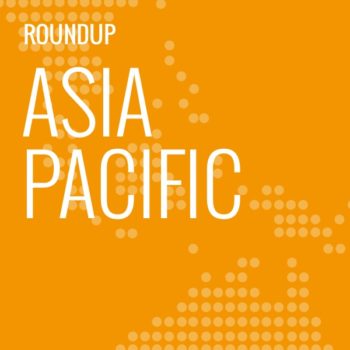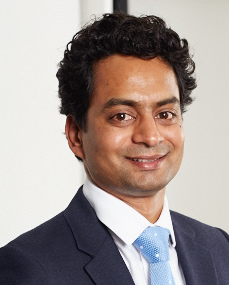APAC Firms Rank Brand Damage a Top Risk; China & Japan to Fuel Luxury Ad Spend

In this weekly segment, ExchangeWire sum up key industry updates on ad tech from around the Asia-Pacific region – and in this edition: APAC firms rank brand damage a top risk; China & Japan to fuel luxury ad spend; MobAir eye China app market; comScore launch MMX Multi-Platform in India; AdAsia open up in Japan & China; and Executive appointments at WPP China & Dentsu Korea.
APAC firms rank brand damage top risk
Businesses in Asia-Pacific deem damage to reputation or brand a top risk, according to Aon's 2017 Global Risk Management Survey.
The report noted that defective products, fraudulent business practices, inappropriate staff behaviour, and corruption continued to be key threats to brand reputation. Furthermore, the impact of social media had intensified, making companies more vulnerable to brand risk.
Aon added that these risks were increasingly volatile and difficulty to prepare for and mitigate, especially amid high smartphone and mobile broadband adoption across the region and in countries such Singapore where penetration rates were more than 100%.
"In the age of Twitter or viral videos, damage to reputation can occur almost instantly", the report stated. "Since reputational events often arrive with little or no warning, businesses are forced to respond quickly and effectively. Companies must have a comprehensive reputation risk control strategy in place to preserve consumer trust."
Among the top 10 business risks in Asia-Pacific were increasing competition, failure to innovate and meet customer needs, cybercrime, and failure to attract and retain top talent.
China & Japan to fuel luxury ad spend
After a 0.5% dip in 2016, luxury advertising spend will recover this year to a 2.9% growth rate this year, fuelled by China, Japan, and the US.
The sector would see a further 3.9% expansion in 2018, with the three markets accounting for 80% of the year's growth, according to latest figures from Zenith's Luxury Advertising Expenditure Forecasts. The report analysed luxury ad spend in 23 markets, including Singapore, Australia, South Korea, the UK, and Germany, and encompassing subcategories such as luxury automotive, fashion and accessories, and watches and jewellery.
The contraction in ad spend last year was primarily the result of stagnant consumer spending on personal luxury goods in 2016, marking the first year without growth since 2009.
With the luxury ad market expected to recover in 2017 and 2018, Eastern Europe was projected to be the fastest-growing region, clocking an average growth of 10% a year. Latin America would see a 5% annual growth, while Asia-Pacific and North America would each see 4% growth per year.
Faced with political uncertainty and low oil prices, the Middle East and North Africa would continue to see their luxury ad market shrink at an average rate of 6% a year.
The internet was expected to surpass print to become the leading luxury ad medium in 2018, accounting for 30.6% of overall ad spend, while TV would account for 29.9% and print 29.7%. The bulk of new ad dollars in the sector would go towards online platforms, which would contribute 87% of total ad spend growth between 2016 and 2018.
Zenith's global brand president Vittorio Bonori said: "Luxury advertisers are having to respond to consumers' changing expectations. Consumers are now looking for luxury experiences that are personal and relevant to them, and targeted brand communication is central to creating this extra brand value."
MobAir eye China app market
The Berlin-based mobile marketing vendor have opened a new office in Shanghai, their first in the Asian region, as they look to tap the lucrative Chinese app ecosystem.
MobAir had been working with Chinese advertisers and publishers since 2015 and now hoped to offer more personalised services to local partners through their new Shanghai outfit. Citing January 2017 figures from eMarketer, MobAir said China's mobile ad spending would grow 58% this year and continue to clock annual growth rates of at least 20% through to 2019.
Their foray into China was part of the company's plans to expand their presence in emerging markets, which were seeing growing demand for mobile apps.
MobAir CEO Barak Aviad said: "China's app economy is accelerating in growth, putting it within striking distance of Japan and the United States. Game apps are the biggest market winners in terms of revenue. Therefore, our company, equipped by years of experience in utility and gaming verticals, sees enormous potential in the Chinese mobile market in terms of app advertising growth."
Richard O'Connell would lead the company's China operations as general manager.
comScore launch MMX Multi-Platform in India

Kedar Gavane, VP, comScore India
The media analytics firm have introduced their MMX Multi-Platform and Mobile Metrix upgrades in India, following the recent launch of their mobile consumer panel for the local market.
The Android mobile panel built on comScore's measurement of India's mobile audiences to provide reporting of visitation, engagement, and demographics including new segments for age and gender, said the vendor.
comScore's India vice president Kedar Gavane said: "The introduction of mobile panel data will enable more granular insights into audiences and their content consumption across devices and platforms. This marks an important step forward in advancing measurement in the industry, and we look forward to delivering even more valuable data and insights that advertisers, agencies, and publishers need to develop their digital strategies and understand the competitive, multi-platform landscape."
According to February 2017 data from comScore MMX Multi-Platform, Entertainment, Social Media, News/Information, and Search/Navigation categories each reached more than three-quarters of India's total digital population of 201 million unique viewers. Instant messengers had 97% share of mobile audiences, followed by News with 91%.
AdAsia open up in Japan & China
The Singapore-based ad tech vendor have set up offices in Tokyo and Shanghai, as they push on with their expansion efforts across the region.
The latest additions put their network of offices to nine across eight countries, including Taipei, Hanoi, and Bangkok.
AdAsia said they would offer their full product range in Japan, including the CastingAsia database of influencers and the AdAsia Digital Platform, supporting various display, video, native desktop, and mobile ad formats. The company added that they would build up a database of local influencers for CastingAsia in Japan, as well as bring in local publishers for the AdAsia Ad Network and AdAsia Video Network.
In China, though, they would adopt a different model and instead aim to establish strategic partnerships with local platform operators and publishers, and connect potential advertisers in the Chinese market to Asian inventory.
Their CEO and co-founder Kosuke Sogo explained: "Our initial priorities will be to build up our ad networks and form partnerships with local players to provide a platform to bridge Chinese marketers to inventory across Asia. At the same time, we're looking to enable marketers across Asia to reach Chinese audiences more efficiently through intelligent tools.
"Now is the perfect time for us to enter China. I'm confident our existing and upcoming innovations, along with the integration of artificial intelligence across programmatic advertising and influencer marketing, can only add value to an exciting ecosystem," Sogo said, noting that his team would build up a local CastingAsia database for the Chinese market.
He added that a growing number of businesses in Japan were looking to expand abroad and AdAsia's foray into the Japanese market would enable them to help local advertisers reach audiences across Asia.

Patrick Xu, CEO, WPP China
Executive appointments at WPP China & Dentsu Korea
WPP have appointed Patrick Xu as CEO of their China operations, to be based out of the Shanghai office.
Currently CEO of GroupM China, Xu would retain this role after assuming the WPP CEO hat from May 2, 2017.
WPP CEO Martin Sorrell said: "China is WPP's third-largest market and has traditionally been a strong contributor to WPP's overall growth. As such, it is important that we have some continuity in our senior management focusing on WPP's growth agenda in the market."
The media agency generated USD$1.6bn (£1.25bn) in revenue from their operations in Greater China, where they hired some 14,000 people across various cities, including Beijing and Guangzhou.
Over at Dentsu Aegis Network, Woohyun Nam would assume the role of South Korea CEO from May 1, 2017, replacing Yoshihiro Nagai, who would be returning to Dentsu in Japan.
Nam joined the agency group in 2006 as Carat Korea's communications planning director, and had since taken on the CEO role at various brands including Vizeum and Isobar, and his current position as chief strategy officer of Dentsu Aegis Network Korea.
As CEO, the executive would be responsible for a local team of more 190 specialists.
Nam said: "Especially in Korea, the current diversified world is not only a matter of physical and technical digitalisation, but also the growing generation gap in today's society. I am grateful to be given this opportunity to nurture the fundamental culture to become more collaborative, empower our operating model, and unlock the holistic strength of our people."
Ad TechAdvertiserAgencyAnalyticsAPACBrand SafetyChinaMedia SpendMobileProgrammaticPublisherTargeting








Follow ExchangeWire